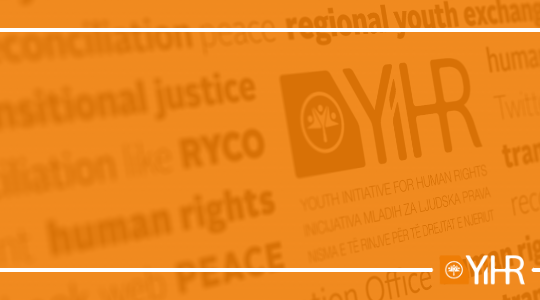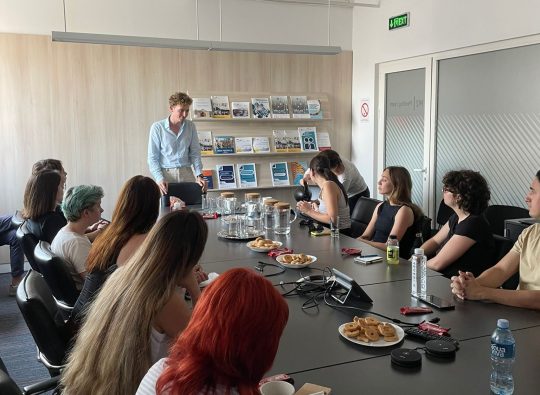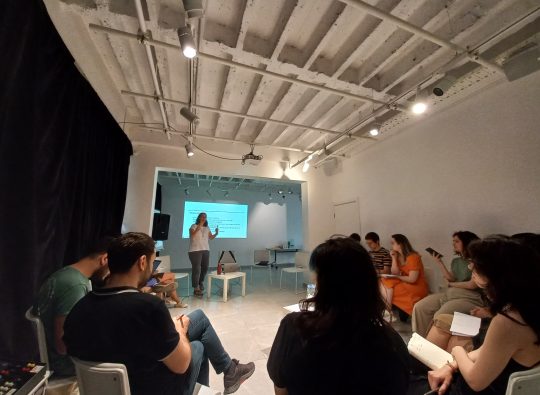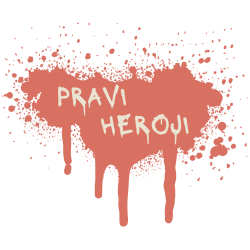Within the Jasenovac Memorial Site, they visited a museum in which names of more than 80,000 persons are written down, who were killed in the camp according to the official record of the Site. The majority of victims are Serbs, Roma and Jews.
The museum also exhibits the objects which former prisoners used for eating, as well as blunt objects – hammers, knives, mallets, axes… used for hitting them on their heads and killing them: any camp guard was allowed to kill a prisoner at any moment, for any reason, without bearing any consequences.
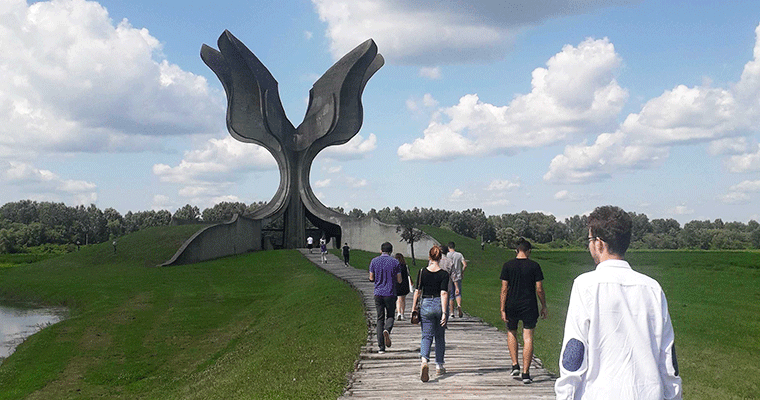
In addition to the clothes of certain prisoners, the museum also exhibits the segments of bricks which the prisoners were producing and which were used to surround the camp from three sides in the length of 3.5 kilometers.
The activists also visited the ‘Stone Flower’ monument, designed by a well-known architect and former mayor of Belgrade, Bogdan Bogdanović. The path to the monument is made of wooden sleepers brought from the railways used to transport imprisoned men, women and children. In front of the monument, the activists have unfolded a banner stating ‘Too Young to Remember, Determined Not to Forget’.
The monument that is a symbol of the Jasenovac Memorial Site is made in the shape of flower with the idea to symbolize the energy drawn from the earth, that is, from the victims, but still open to the Sun and new generations so that what happened to them in that camp never happens to anyone else.
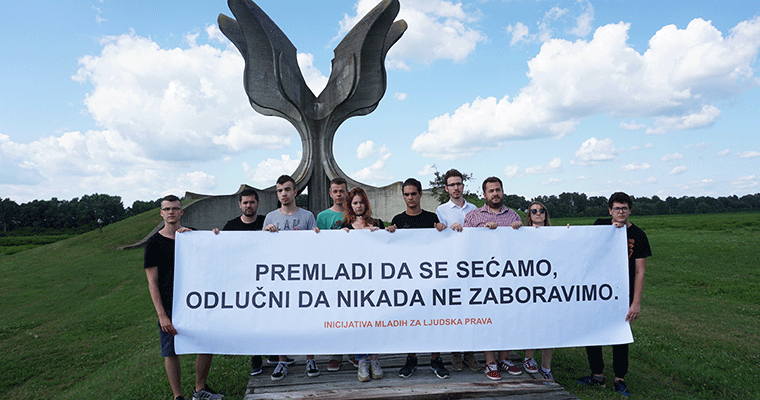
The path to the monument situated on the land of former concentration camp III Ciglana Jasenovac passes beside several mounds which Bogdanović designed on places where mass graves were found, in which prisoners were buried; their remains were burnt 15 days before the end of the Second World War.
The Jasenovac Concentration Camp was the largest concentration camp established by the Ustashe regime in the territory of the Independent State of Croatia during the Second World War. It consisted of several units founded in short periods of time between August 1941 and January 1941.
At the beginning of its work, the camp had only male prisoners, but since 1943 women and children were imprisoned there, as well.
The Jasenovac area was selected for a location of the camp due to its geographic position, as it is surrounded by rivers and swamps, which made possible escapes harder and helped the guards to control the prisoners.
The prisoners were forced into hard physical labour within industrial facilities, which was also a way to torture and humiliate them.
The concentration camp was closed on April 22 1945. After the breakthrough of the Syrmian front, expecting the arrival of the National Liberation Army, the Ustashe decided to kill all who were alive at that moment.
The last group of 640 women were killed on April 21; 1073 male prisoners were still alive.
On April 22, led by Ante Bakotić, 600 prisoners started a breakthrough of the camp, but the majority of them were killed in crossfire from surrounding bunkers.
Ninety prisoners survived the breakthrough. Only two of them are still alive. 470 prisoners, who were too sick or too weak to confront the Ustashe, were killed and their bodies wire minded together with camp facilities.

